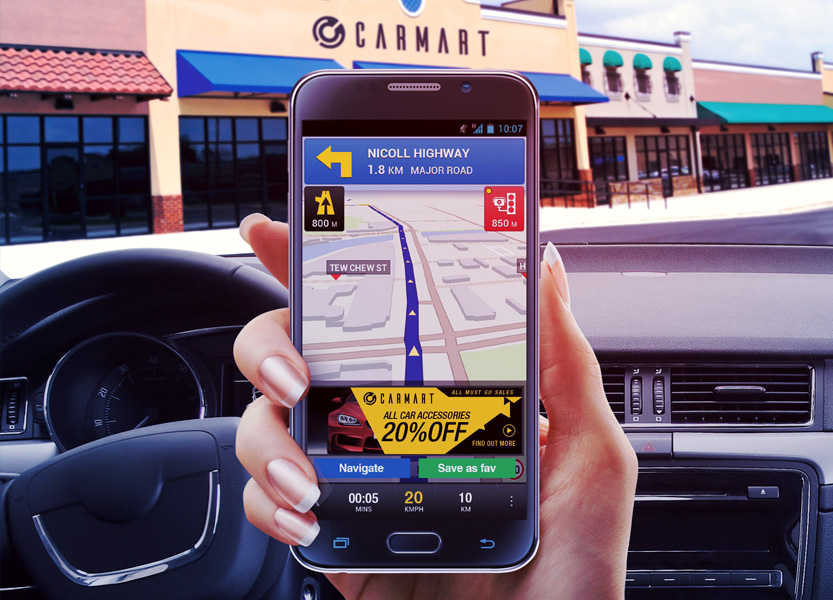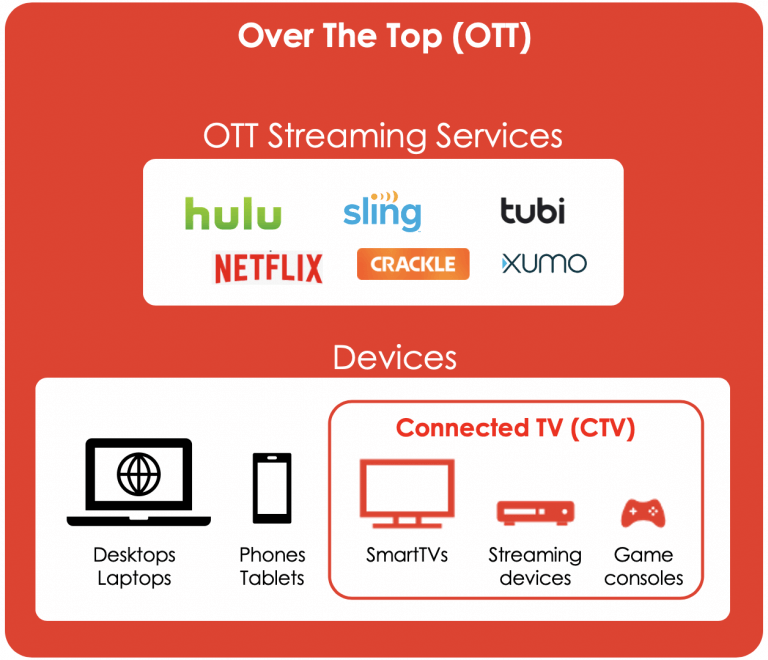Location-Based Targeting Platforms: Revolutionizing Marketing Strategies
Are you tired of generic, one-size-fits-all advertising campaigns that waste your marketing budget? It’s time to embrace the power of location-based targeting. With a location-based targeting platform, you can now reach your audience with pinpoint accuracy, delivering personalized messages to customers exactly where they are. This innovative technology allows you to target users based on their real-time location, ensuring that your advertisements are seen by the right people at the right time.

Benefits of Using Location-Based Targeting Platforms
Location-based targeting platforms offer a multitude of benefits for businesses looking to maximize their marketing efforts. Firstly, by utilizing advanced geolocation data, these platforms help you create hyper-targeted campaigns that resonate with your audience on a deeper level. Instead of a one-size-fits-all approach, you can tailor your messages to specific locations, increasing the relevancy and effectiveness of your ads.
In addition, location-based targeting allows you to reach your audience in the moments that matter most. For example, if you own a restaurant, you can target users who are in close proximity, enticing them with special offers or promotions. This not only increases foot traffic but also drives conversions and boosts your return on investment (ROI). By leveraging the power of location-based targeting, you can connect with potential customers at the exact moment they are ready to make a purchasing decision.
Furthermore, location-based targeting platforms provide valuable insights into consumer behavior. By analyzing location data, you can gain a deeper understanding of your audience’s preferences and habits. This data can then be used to refine your marketing strategies and optimize your campaigns for better results. With the ability to harness the power of location-based targeting, you can stay ahead of your competition and make informed decisions that drive business growth.

How Location-Based Targeting Works
At its core, location-based targeting uses GPS, Wi-Fi, or cellular data to determine the location of a user’s device. This information is then used to deliver relevant advertisements to users within a specific geographical area. While the exact mechanisms may vary between platforms, the underlying principle remains the same – delivering personalized messages to users based on their real-time location.
When a user opens an app or visits a website, their device sends signals to nearby Wi-Fi access points or cell towers. These signals are then used to triangulate the user’s position. By combining this information with GPS data, location-based targeting platforms can determine the user’s exact location. This allows advertisers to deliver highly targeted messages to users within a specific radius, ensuring maximum impact and engagement.

Popular Location-Based Targeting Platforms
There are several location-based targeting platforms available in the market today, each offering unique features and capabilities. One of the most well-known platforms is Google Ads, which allows advertisers to create location-based campaigns that target users based on their proximity to a specific location. With Google Ads, you can set up geofences around your store or business, ensuring that your ads are shown to users within a certain radius.
Another popular platform is Facebook Ads, which offers powerful targeting options based on location data. With Facebook Ads, you can target users based on their current city, zip code, or even specific addresses. This level of granularity allows you to reach users who are most likely to be interested in your products or services, increasing the chances of conversion.
Other notable location-based targeting platforms include Foursquare Ads, which leverages the platform’s extensive database of location data to deliver targeted ads, and AdRoll, which allows you to create customized campaigns based on user location and behavior. With a wide range of platforms to choose from, businesses can find the one that best suits their needs and objectives.
Case Studies of Successful Location-Based Targeting Campaigns
To truly understand the power of location-based targeting, let’s explore some real-world case studies of successful campaigns. One such example is the Starbucks Mobile Order & Pay feature. By using geofencing technology, Starbucks is able to send push notifications to customers who are in close proximity to their stores, enticing them with special offers or promotions. This targeted approach has not only increased foot traffic but also boosted sales and customer loyalty.
Another noteworthy example is the “Snaplications” campaign by McDonald’s. By partnering with Snapchat, McDonald’s launched a geofilter that allowed users to apply for a job directly through the app. This campaign not only targeted young users who were most likely to be interested in a job at McDonald’s but also made the application process fun and engaging. As a result, McDonald’s received an overwhelming number of applications and successfully hired new employees.
These case studies demonstrate the effectiveness of location-based targeting in driving business results. By delivering personalized, location-specific messages, businesses can capture the attention of their target audience and drive them towards a desired action.

Tips for Optimizing Your Location-Based Targeting Strategy
While location-based targeting offers immense potential, it is important to optimize your strategy to achieve the best results. Here are some tips to help you make the most of this powerful tool:
- Define your target audience: Before launching a location-based targeting campaign, clearly define your target audience. Understand their demographics, preferences, and habits to create personalized messages that resonate with them.
- Use compelling visuals and copy: To capture the attention of users, create visually appealing ads with engaging copy. Highlight the benefits of your products or services and offer incentives to encourage action.
- Test and optimize: Continuously test different targeting parameters, ad formats, and messaging to find what works best for your audience. Analyze the results and make data-driven optimizations to improve performance.
- Leverage data analytics: Use the insights provided by location-based targeting platforms to gain a deeper understanding of your audience’s behavior. Analyze the data to identify trends, preferences, and opportunities for growth.
- Consider privacy concerns: While location-based targeting can be highly effective, it is important to respect user privacy. Ensure that you are transparent about data collection and provide opt-out options for users who do not wish to participate.
By following these tips, you can maximize the impact of your location-based targeting campaigns and achieve better results for your business.
Challenges and Limitations of Location-Based Targeting
While location-based targeting offers numerous benefits, it also comes with its own set of challenges and limitations. One of the main challenges is the accuracy of location data. While platforms strive to provide the most accurate data possible, there may be instances where the location is not precisely determined. This can result in ads being shown to users who are outside the intended target area.
Another limitation is the potential for ad fatigue. If users are constantly bombarded with location-based ads, they may become desensitized or annoyed, leading to a decrease in engagement. To combat this, it is important to strike a balance between frequency and relevance, ensuring that your ads are seen by the right people at the right time.
Additionally, not all businesses can benefit from location-based targeting. For example, online businesses that do not have a physical location may find it challenging to leverage this strategy effectively. It is important to consider whether location-based targeting aligns with your business objectives and target audience before investing in this technology.

Choosing the Right Location-Based Targeting Platform for Your Business
With a plethora of location-based targeting platforms available, choosing the right one for your business can be overwhelming. To make an informed decision, consider the following factors:
- Features and capabilities: Evaluate the features and capabilities of each platform to ensure that they align with your business objectives. Look for platforms that offer advanced targeting options, robust analytics, and seamless integration with other marketing tools.
- User interface and ease of use: Consider the user interface and ease of use of each platform. Look for platforms that are intuitive and user-friendly, allowing you to set up and manage campaigns with ease.
- Pricing and scalability: Evaluate the pricing structure of each platform and consider how it aligns with your budget. Additionally, consider the scalability of the platform, especially if you plan to expand your location-based targeting efforts in the future.
- Customer support and resources: Look for platforms that offer reliable customer support and provide resources such as tutorials, guides, and case studies. This can greatly assist you in setting up and optimizing your location-based targeting campaigns.
By carefully considering these factors, you can choose a location-based targeting platform that meets your business needs and helps you achieve your marketing objectives.
Best Practices for Using Location-Based Targeting in Your Marketing Campaigns
To ensure the success of your location-based targeting campaigns, here are some best practices to keep in mind:
- Understand your audience: Gain a deep understanding of your audience’s preferences, habits, and needs. Use this information to create personalized, location-specific messages that resonate with them.
- Test different strategies: Continuously test and optimize different targeting parameters, ad formats, and messaging to find what works best for your audience. Use A/B testing to compare the performance of different variations and make data-driven decisions.
- Monitor and analyze data: Regularly monitor the performance of your location-based targeting campaigns and analyze the data to identify trends and opportunities for improvement. Use this information to make data-driven optimizations and refine your strategy.
- Integrate with other marketing channels: Location-based targeting works best when integrated with other marketing channels. Consider how you can leverage location data across various touchpoints to create a seamless and cohesive customer experience.
- Stay up to date with privacy regulations: Stay informed about privacy regulations and ensure that you comply with them. Be transparent about data collection and provide opt-out options for users who do not wish to participate.
By following these best practices, you can maximize the effectiveness of your location-based targeting campaigns and achieve better results for your business.

Conclusion: Harnessing the Power of Location-Based Targeting for Business Success
In an increasingly competitive digital landscape, businesses need to find innovative ways to reach their audience and drive engagement. Location-based targeting platforms offer a game-changing solution, allowing businesses to deliver personalized messages to customers exactly where they are.
By utilizing advanced geolocation data, businesses can create hyper-targeted campaigns that resonate with their audience on a deeper level. With the ability to reach users in the moments that matter most, businesses can increase foot traffic, drive conversions, and boost their ROI.
While location-based targeting comes with its own set of challenges and limitations, the benefits far outweigh the drawbacks. By understanding your audience, optimizing your strategy, and choosing the right platform, you can harness the power of location-based targeting and take your marketing efforts to new heights.
Say goodbye to wasted advertising dollars and hello to a more efficient and effective marketing strategy. Embrace the power of location-based targeting today and watch your business thrive.

